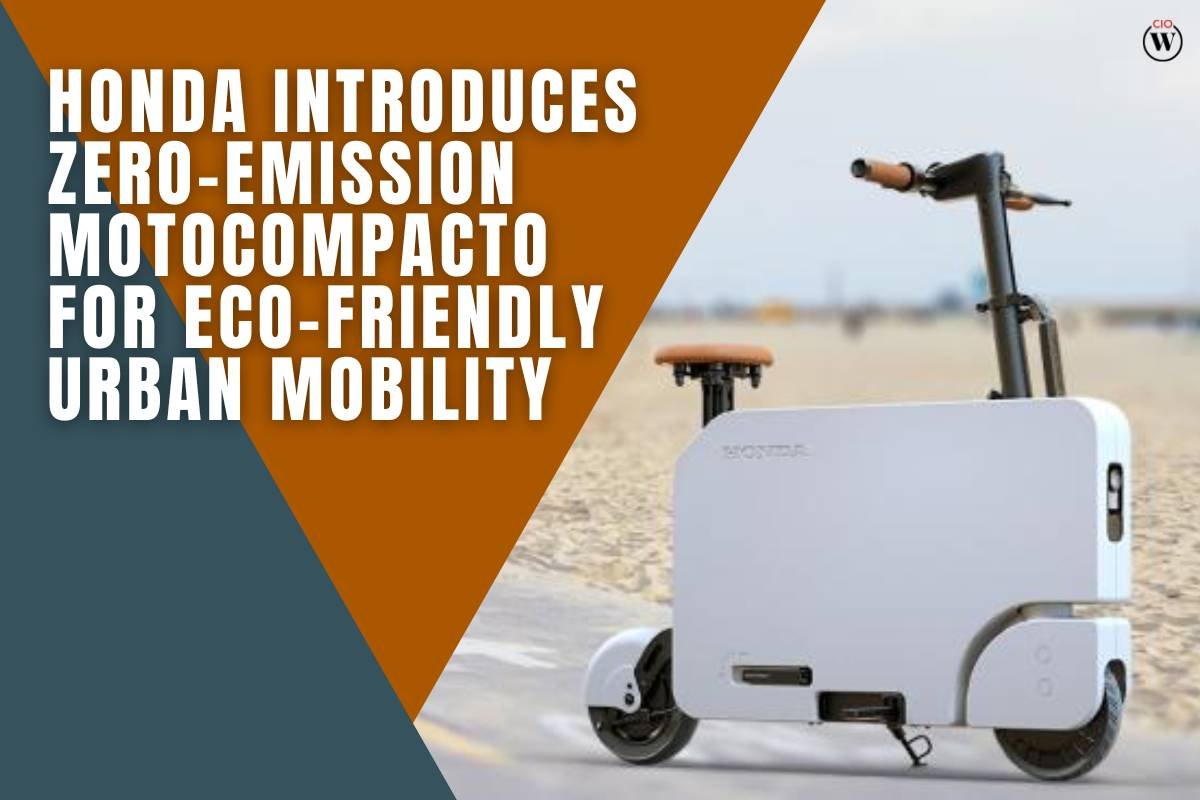Source – hondanews.com
Honda, a renowned name in the automotive industry, has set its sights on revolutionizing urban transportation in the United States with the introduction of their unique personal mobility concept known as the “Motocompacto.” This foldable, all-electric micro-motorcycle, inspired by their iconic 1980s compact scooter, the Motocompo, is designed to offer a cleaner and greener alternative for urban commuters.
With its three wheels and a compact powertrain, the Motocompacto can reach a top speed of 15 mph (25 km/h). Honda believes that this innovative vehicle will not only provide a fun and easy way to get around but also significantly reduce the carbon footprint of urban travel.
Jane Nakagawa, Vice President of the R&D Business Unit at American Honda Motor Company, emphasized the unique nature of the Motocompacto in Honda’s electrification strategy, stating, “Motocompacto is uniquely Honda – a fun, innovative, and unexpected facet of our larger electrification strategy.” This compact electric scooter is ideal for navigating city streets, and college campuses, and as a first or last-mile transportation option.
Starting at just $995, the Motocompacto is now available for purchase in the US through Motocompacto.honda.com and at select Honda and Acura automobile dealers, making it an affordable and eco-conscious choice for urban commuters.
A Flexible City Runabout
The Motocompacto has been meticulously designed to seamlessly fit into the urban landscape, offering users an eco-friendly and convenient mode of transportation. The vehicle is powered by a permanent magnet, direct-drive electric motor with a peak output of 490 watts, delivering 11.8 lb.-ft. (16 Nm) of torque.
It operates in a front-wheel drive configuration, allowing it to reach its maximum speed of 15 mph (25 km/h). The Motocompacto’s onboard battery boasts a capacity of 6.8Ah and can be fully charged in just 3.5 hours using a standard 110v power source. With a range of up to 12 miles (19 kilometers) on a single charge, it’s an efficient and eco-friendly option for short commutes and trips within the city.
The compact design of the Motocompacto extends to its portability as well. It can be easily folded into a compact, lightweight, and stackable carrying case, making it convenient to transport in a vehicle, on public transportation, or to store in tight spaces. Safety and durability have not been compromised, as the vehicle features a robust heat-treated aluminum frame and wheels, bright LED headlights and taillights, side reflectors, and a welded steel lock loop on the kickstand that is compatible with most bike locks.
Honda’s Game-Changing Motocompacto: Affordable, Foldable E-Scooter for 2024
Honda’s Electrification Strategy
Honda’s introduction of the Motocompacto aligns with its broader electrification goals. The company is gearing up to launch 30 new electric vehicles (EVs) worldwide by 2030, with a target of achieving carbon neutrality for all products and corporate operations by 2050. To accelerate its efforts, Honda is aiming for 100% zero-emission vehicle sales in North America by 2040.
In 2024, Honda will introduce the Honda Prologue and Acura ZDX, marking their entry into the fully-electric SUV market. Additionally, 2025 will see the release of a mid to large-size EV model in North America, built upon Honda’s proprietary EV architecture. The Motocompacto, when used in conjunction with these electric cars or public transportation, can offer a low-emission solution, fulfilling the crucial last-mile connectivity requirements in urban areas.
With the Motocompacto’s arrival in the US market, Honda is paving the way for eco-conscious urban mobility solutions and taking significant steps towards its electrification and sustainability goals. This innovative and affordable electric scooter is set to make a positive impact on the way Americans commute within cities and campuses.









